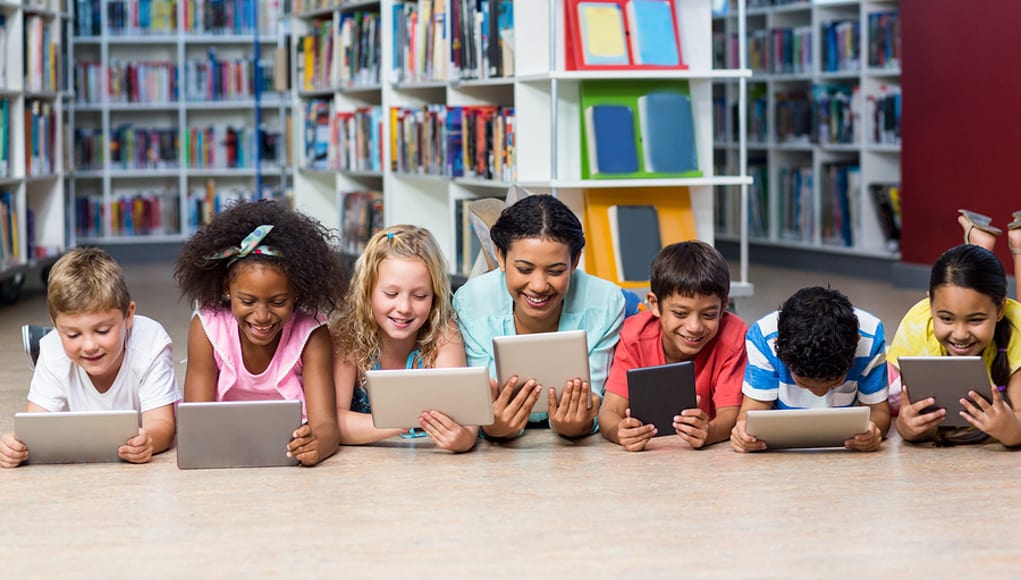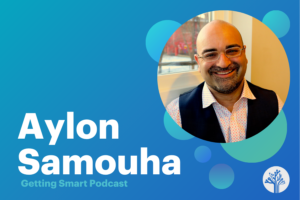Building Culturally Responsive Classrooms with Digital Content

By Dr. Karen Beerer
Recently, during one of the professional development events I occasionally facilitate as Discovery Education’s Vice President of Learning and Development, I asked a group of building-level school administrators, “What keeps you up at night?” This question, asked as part of the process of framing the day’s learning targets, at first elicited a few laughs and a number of comments about late night eating and the recent Super Bowl. However, as we drilled a little further into the conversation, the administrators identified the ongoing challenge of meeting the needs of a very diverse group of learners as their number one concern.
Defining diversity in the context of this challenge engendered its own discussion. For these administrators, meeting the needs of a racially diverse population was indeed a challenge. Equally daunting, though, was how to meet the diverse needs of students with differing economic and cultural backgrounds, not to mention varying learning styles. From offering a range of reading levels within a classroom to ensuring the cultural relevance of topics within the curriculum, the administrators I was working with were stretched quite thin as they sought to support the success of all learners in the district.
The administrators in this example are not alone. As I travel across the country working with school leaders in districts big and small, I have found that the question of how to meet the needs of increasingly diverse groups of learners is leading to many sleepless nights for many school leaders.
To help solve this issue, I find more and more educators are turning to a culturally responsive teaching framework for actionable strategies to address needs of diverse learners within the classroom. Gary Howard’s work in outlining principles of culturally responsive teaching is one of the frameworks at the forefront of this effort. His research calls for:
- Ensuring the learning environment is physically and culturally inviting.
- Accommodating the differences in learners through student-centered instruction.
- Stressing collectivity of interactions as well as individuality.
- Affirming students through cultural connections, particularly in relationship to the curriculum.
Educators nationwide are embracing these simple principles, but the how is where I am seeing my colleagues struggle. They ask, “How do I implement these principles effectively in a classroom with 25 students or 35 students?” In urban, rural and suburban classrooms, students bring with them into the classroom multiple cultures, languages, economic backgrounds and learning needs, and the task of addressing the many needs of these students rapidly becomes overwhelming.
Digital content is among the tools educators can use to integrate a culturally responsive teaching framework into classroom instruction. It can help students develop their own voice and become academically successful and critically conscious forces of change in their communities. Here’s a quick list of the seven ways educators can use digital content to implement culturally responsive teaching effectively:
- Integrate digital content into your instruction. Digital content captures up-to-date images, situations and subjects to illustrate and pose real-world problems. In turn, this will grow engagement among students of all abilities and backgrounds and will allow students to “see themselves” in the content, thus making classroom instruction even more relevant.
- Ensure the digital content is high-quality. High-Quality Digital Content (HQDC) provides learners multiple pathways to understanding, ensuring that there is almost always another pathway to learning immediately available. Beginning with a graphically attractive visual design, students are naturally drawn into the material. If a student stumbles on the meaning of a word, HQDC provides alternative explanations. If students struggle with reading fluency, HQDC provides a read aloud options. If the text is too complex, HQDC provides a lower level of complexity. If reading the text did not engage students, there is a video alternative, or better yet, an interactive tool to help them understand the concept. HQDC also provides multiple language options for students learning a second language.
- Use digital activities such as high-quality graphics, games, virtual labs and robust math and science challenges to motivate students. Think of digital content as the thin end of the wedge and use it to engage students in topics traditionally taught through direct instruction. This will not only create more student-centered instructional opportunities and encourage students to think more deeply, but it will also help support teachers as they become facilitators of learning.
- Build students’ vocabularies with a variety of different digital resources such as videos, animations, and images. Different types of videos, images, animations and definitions (of course) enable students to determine the meaning of content vocabulary while also allowing them to exert control over how they best learn words. This will help in bringing elements of learner agency into your classroom.
- Engage students in experiences, such as a virtual field trip to the North Pole, that they wouldn’t ordinarily have, or perhaps may never have, to build understanding of others. Recent technological advancements in virtual reality and augmented reality can help build new experiences for students that would be impossible to replicate in any other way. These experiences work with minimal technology investment and can be viewed with the inexpensive Google Cardboard device. In addition, students can access these experiences on a laptop, PC, or tablet and still receive an exceptional 360° perspective through the use of arrow keys, a mouse, or by dragging on a touch screen.
- Close the “belief gap”. The belief gap is defined as a lack of belief among some educators in the potential of students from low-income families and students of color. Going digital provides us with the opportunity to move students from consumers of information to creators of information and empowers them to share, display and showcase their work, their thinking and their accomplishments to the community and globally. Equally important is the fact that by encouraging students to use digital resources in their daily school work, educators can show students that they are preparing them for success in the world beyond the classroom.
- Know your students and the communities you serve. Take the time to learn about your students’ culture, their history and their backgrounds. Just as digital content can fill in the gaps in your students’ understanding of the world, you can use it for your own personal professional development to learn about who your students are and from where they come. In addition, take the time to know your students’ personal circumstances. For example, find out which of your students do not have internet connections at home so you can devise strategies to help them access content outside the classroom. Or, learn which language is spoken in your students’ homes so that you can create plans to better connect with parents for whom English is not the primary language. This type of information will help you better serve your students.
As you reflect on culturally responsive teaching in your schools, digital content has the potential to serve as an equalizer. Also, keep in mind that not every student needs a device in a classroom powered by digital content. In fact, some of the best instruction that I’ve seen has occurred in non-1:1 classrooms, because that’s where teaching has to be more agile due to the fact that not every student has a device in front of him/her. Cultural responsiveness through “going digital” is about being able to answer yes to these questions throughout all classrooms in your school:
- Is instruction relevant to students’ lives and the world around them?
- Is your teaching preparing students to be future ready?
- Do the instructional resources enhance students’ learning?
- Do the instructional resources reflect the students in any way?
- How is what you’re teaching going to impact or change students’ lives?
Answering yes to these questions is what all students need and deserve.
For more, see:
- How do We Ensure Personalized Learning is a True Equity Initiative?
- Bridging the Digital Divide: Strategies for Ensuring Student Access to Technology at Home
- Why Early Childhood Education Matters Now More than Ever
Dr. Karen Beerer is Discovery Education’s Vice President of Learning and Development. Follow them on Twitter: @DiscoveryEd
Stay in-the-know with all things EdTech and innovations in learning by signing up to receive the weekly Smart Update.






Betty
Thanks for helping the educators to support the ELLs during their first years learning their second language.
Please post the resources where we get this info. I mean the in-text, citations and all other info that help to turn in for college course. Thanks,